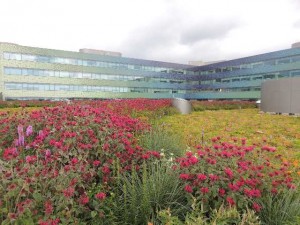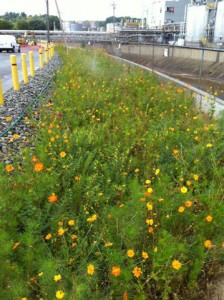 About Us
About Us
Green City Resources is a Cincinnati based, woman owned company specializing in the design, installation and maintenance of stormwater management systems; bioretention, vegetated / green roofing, rainwater harvesting and native/sustainable landscaping. We also specialize in healing gardens and horticulture therapy gardens. Green City is a certified WBE and SBE company.
Our Goal…
As a Green Infrastructure Landscape Design company our shared goal is to preserve natural areas and link those areas of habitat and people to benefit biodiversity and counter the fragmentation of our development footprint. With conservation in mind the green infrastructure approach adds value to land development, aids habitat restoration and promotes balance between people and nature. We believe, urban revitalization depends on the use of green infrastructure to alleviate the problems we have incurred with water and climate. Wanting to emphasize the value of natural areas within the city has propelled us from being just a landscape company to centering our studies and efforts on green roofing, watershed management, habitat restoration and sustainable land use. With expertise in many facets of these areas we can assist you with large scale commercial developments down to a backyard rain garden. We promote the U.S. Green Building Councils green building strategies and watershed management practices through the LEED process, working with state and local best management practices. Our efforts are to create the framework that will ensure our natural resources will be there for future generations.
What is Green Infrastructure?
Green infrastructure is management approaches and technologies that utilize, enhance and/or mimic the natural hydrologic cycle processes of infiltration, evapotranspiration and reuse. Green infrastructure approaches currently in use include green roofs, trees and tree boxes, rain gardens, vegetated swales, pocket wetlands, infiltration planters, porous and permeable pavements, vegetated median strips, reforestation/revegetation, and protection and enhancement of riparian buffers and floodplain’s. Green infrastructure can be used almost anywhere soil and vegetation can be worked into the urban or suburban landscape. Green infrastructure also includes decentralized harvesting approaches, such as the use of rain barrels and cisterns to capture and re-use rainfall for watering plants or flushing toilets. These approaches can be used to keep rainwater out of the sewer system so that it does not contribute to a sewer overflow and also to reduce the amount of untreated runoff discharging to surface waters. Green infrastructure also allows storm water to be absorbed and cleansed by soil and vegetation and either re-used or allowed to flow back into groundwater or surface water resources.

In managing wet weather, green infrastructure practices, like all types of practices, need to be implemented at multiple scales: site, neighborhood, and regional or watershed. The most beautifully designed site, even if multiple green infrastructure practices are used, may actually result in an overall increase in impervious surfaces and thus storm water discharges, if new or expanded roads, parking lots and commercial development are needed to serve it. For that reason, we include approaches such as infill, redevelopment and preserving natural areas in our suite of green infrastructure approaches. For more information on specific green infrastructure practices and how they function, visit: EPA Green Infrastructure.